1. Real-time Satellite Image Analysis
AI-driven computer vision techniques allow almost instantaneous processing of satellite imagery to spot emerging natural threats that human analysts might miss. By automatically monitoring cloud formations, thermal anomalies, and other subtle visual indicators in near real-time, AI systems can identify developing storms or wildfires at their earliest stages. This continuous surveillance shortens the time between a hazard’s formation and detection, enabling forecasters to issue warnings more quickly. For instance, geostationary weather satellites already give near real-time views of storm development that help meteorologists flag severe weather sooner. Integrating AI further enhances this, filtering vast image data streams for early danger signs with minimal delay.

Early results demonstrate that on-board AI processing of raw satellite data can markedly reduce detection latency for disasters. In one European Space Agency project, researchers deployed AI models directly on satellite imagery to identify forest wildfires without waiting for lengthy ground processing, yielding near real-time, actionable information for responders. Similarly, NOAA’s GOES satellites continuously watch for atmospheric “triggers” of severe storms (like distinctive cloud top patterns) and, when combined with AI, can highlight nascent hurricanes or thunderstorms well before they intensify. These AI-enhanced analyses turn satellites into rapid early warning sentinels—scanning for the faintest signs of trouble and giving officials precious lead time to prepare. By processing images faster and more intelligently than before, AI transforms satellite data into an immediate alert system for brewing natural disasters.
2. Enhanced Weather Forecasting Models
Modern machine learning models assimilate massive atmospheric and oceanic datasets to produce more precise and timely weather forecasts than traditional methods alone. By learning complex patterns from historical weather data, AI augments physical forecasting models to improve prediction granularity—whether anticipating a sudden cloudburst in a city neighborhood or refining a hurricane’s track. These AI-augmented models update rapidly and can incorporate data sources (like radar, satellites, and sensors) that classical models struggle to fuse in real time. The result is more accurate short-term forecasts and extended outlooks that better warn of extreme events. Ultimately, communities receive forecasts that are both high-resolution and frequently updated, supporting proactive measures before conditions turn dangerous.

Early studies show that AI-enhanced forecasting can outperform conventional numerical weather prediction in both speed and accuracy. For example, DeepMind’s GraphCast—a state-of-the-art AI weather model—was able to generate 10-day global forecasts more accurately and much faster than the European Centre’s high-resolution physics model. GraphCast not only matches physical models on routine weather patterns but also provides earlier warning of extreme events like cyclones and heavy precipitation by predicting their development further in advance. Likewise, NOAA scientists have integrated machine learning into operational tools (e.g. the ProbSevere model) that combine satellite and radar data to predict severe thunderstorms up to 90 minutes ahead. Such hybrid models have demonstrated tangible gains—ProbSevere, for instance, adds about 14 minutes of lead time over radar-only methods for severe storm warnings. These examples underline how AI-driven forecasting is accelerating disaster readiness by improving the detail and lead time of weather predictions.
3. Early Earthquake Detection
AI algorithms are improving earthquake early warning by detecting the faint initial tremors (P-waves) faster and more reliably than manual methods. By continuously monitoring data from dense seismic sensor networks, machine learning models can recognize the subtle vibration patterns that precede a major quake’s destructive shaking. These systems rapidly estimate an earthquake’s location and magnitude within seconds of its start, enabling alerts to be issued before the stronger S-waves arrive. Even a few seconds’ warning can be lifesaving—automatic actions like slowing trains, shutting gas lines, or pausing surgeries can be triggered to reduce damage and casualties. In essence, AI’s pattern-recognition speed gives populations precious seconds to brace for impact that traditional systems might miss.
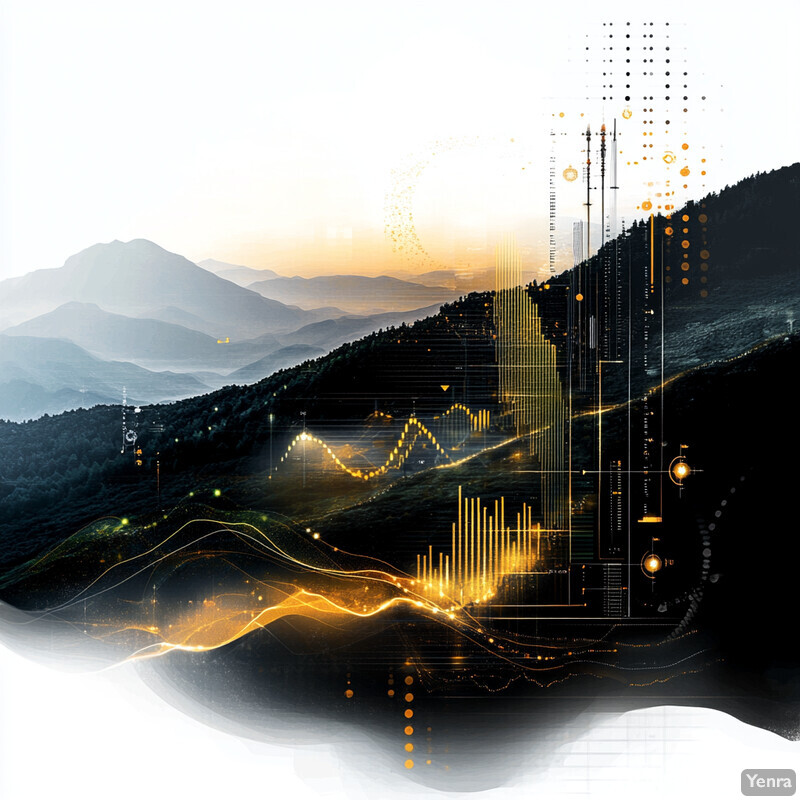
Recent research shows that deep learning models can detect earthquakes and predict their severity almost instantaneously after onset. For example, a convolutional neural network trained for P-wave detection was able to pick up the first 3 seconds of a quake’s signal and correctly estimate a magnitude 5+ event, providing an early alert before strong shaking began. Transformer-based AI models have also been applied to seismic data, significantly improving the accuracy and speed of early warnings. In tests on thousands of past earthquakes, an AI method using transformer neural networks yielded faster and more accurate predictions of ground shaking intensity compared to conventional approaches. This translated to a higher number of correct and timely alerts for strong quakes in retrospective evaluations. Moreover, the ShakeAlert system in the U.S. demonstrates the value of early detection: it uses algorithms (including AI components) to issue alerts that automatically slow trains, close water valves, and open firehouse doors moments before shaking is felt. Together, these advances illustrate how AI is pushing earthquake early warning toward quicker detections and automated protective actions, potentially mitigating an earthquake’s impact.
4. Improved Flood Prediction
AI models are revolutionizing flood forecasting by integrating diverse data—like rainfall, river levels, terrain, and soil saturation—to pinpoint when and where floods will occur with greater accuracy. Unlike traditional flood models that require extensive calibration for each watershed, machine learning systems can learn generalized patterns from vast datasets and apply them even in data-sparse regions. This leads to longer lead times and more precise flood warnings. Communities benefit through earlier evacuation notices and better preparation of flood defenses, reducing loss of life and property. In summary, AI-driven flood prediction is providing more lead time and coverage (even in remote basins) compared to conventional methods, thereby enhancing disaster readiness for flooding events.

A recent breakthrough study demonstrated the power of AI in forecasting extreme floods globally, even for rivers lacking historical measurements. Researchers showed that an AI-based model could predict major river floods five days in advance with accuracy comparable to or better than a leading physics-based model’s same-day predictions. In other words, the AI approach achieved in 5-day forecasts what traditional models could only achieve at the last minute, effectively extending warning times for severe floods. This model has been integrated into an operational early warning system (Google’s Flood Hub) now providing free flood forecasts in over 80 countries. Additionally, AI flood models excel at combining multiple inputs: for instance, one study employed a deep neural network to fuse radar rainfall, upstream gauges, and soil moisture data, successfully predicting flood peaks and inundation extents faster than standard hydrological simulations. These improvements mean authorities can issue evacuation orders or stage resources earlier. A practical outcome was seen in South Asia, where AI-driven flood alerts have given communities days of extra warning, allowing thousands of residents to move to safety in time. Overall, by learning from vast flood datasets and continuously updating with new events, AI models are delivering earlier and more reliable flood warnings than previously possible.
5. Storm Surge and Tsunami Forecasting
AI is being applied to coastal hazard forecasting by learning from historical ocean data to predict the magnitude and timing of storm surges and tsunamis faster than traditional physics models. Neural networks can instantaneously estimate how high storm-driven seas will rise or whether an undersea earthquake will generate a tsunami, providing coastal communities with critical extra minutes for evacuation. This AI-driven approach complements existing sensor networks (like tide gauges and buoys) by filling in predictive gaps—rapidly calculating outcomes that otherwise require slower numerical simulations. In short, AI tools are augmenting surge and tsunami early warnings, making them quicker and potentially more accurate, which directly translates into more time to move people out of harm’s way along vulnerable coastlines.

Researchers have shown that machine learning can drastically speed up tsunami warnings by analyzing unconventional signals. One notable system uses AI to interpret underwater acoustic readings (infrasound waves) immediately after an earthquake, since these sound waves travel much faster than tsunami waves. The AI model classifies the earthquake’s characteristics (e.g. fault slip type and magnitude) within a fraction of a second, effectively predicting whether a tsunami will form long before the tsunami would reach detectors. In tests, this approach accurately anticipated tsunami risk well ahead of traditional buoy measurements. Likewise, for storm surges caused by hurricanes, neural networks have been trained on historical storm data to provide rapid estimates of coastal water level rise. In Hong Kong, an ensemble ML model successfully predicted peak storm surge heights during cyclones, demonstrating performance on par with detailed physical models but with far less computation time. Another study employed a deep learning model (LSTM) for the South China Sea that could ingest real-time hurricane parameters and output surge forecasts nearly instantly. These AI methods learn from past events to improve over time, as evidenced by tools that continually refine their accuracy with each new cyclone or tsunami event. By delivering faster predictions—whether it’s a tsunami wave height or a storm surge peak—AI-enhanced systems give emergency managers a vital head start to evacuate coastal areas and deploy defenses.
6. Volcanic Activity Monitoring
AI is helping scientists better monitor volcanoes by automatically detecting the subtle precursors of eruptions in seismic, gas, and satellite data. Machine learning models can sift through continuous streams of tremor vibrations, ground deformation measurements, and volcanic gas emission readings to identify patterns that historically precede eruptions. This allows early warnings to be issued with more confidence and lead time. For example, an AI might recognize an increase in shallow earthquake swarms or a change in the ratio of gases like sulfur dioxide weeks or days before an eruption—signals that human analysts could miss until it’s almost too late. By providing around-the-clock “watchdogs” on restless volcanoes, AI gives local authorities improved ability to warn and evacuate communities before an eruption occurs.
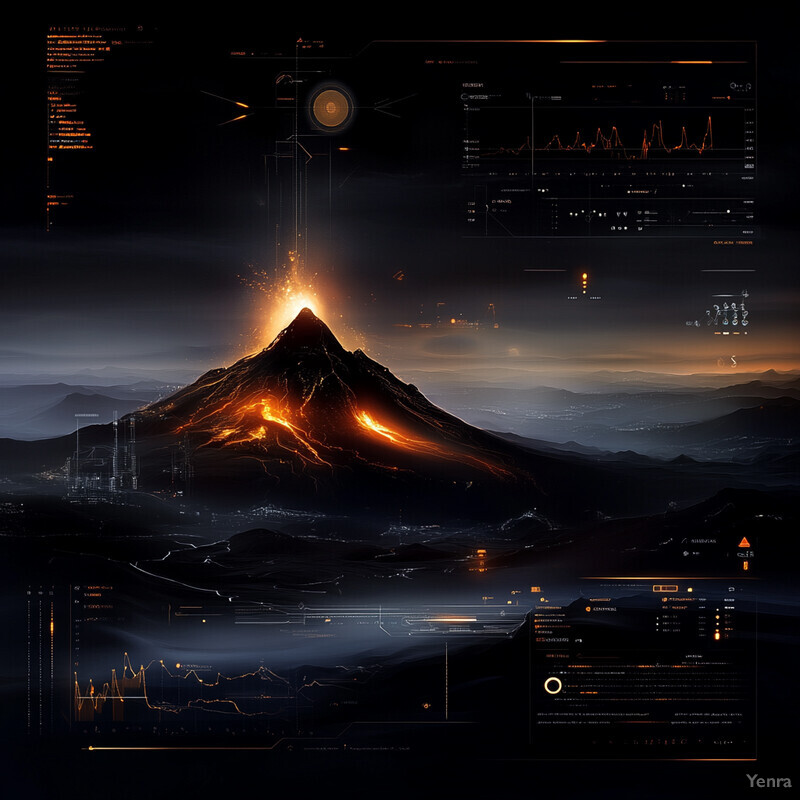
A July 2024 study showcased how machine learning can automate the detection of volcanic tremor – a persistent seismic vibration often signaling magma movement underground. At Alaska’s Pavlof Volcano, researchers developed an ML system that continuously monitors seismic and infrasound data to flag these subtle tremors. The AI eliminated hours of manual analysis by reliably classifying tremor events that were previously difficult to discern from background noise. This provides volcanologists with early indicators of eruptive activity, since heightened tremor typically precedes eruptions. In another breakthrough, a 2025 global study used an AI-driven approach to find “repeatable patterns” in the seismic signals before eruptions at 24 different volcanoes. By training on 41 past eruptions, the model learned common precursor signatures and could successfully predict eruptions at volcanoes with little historical data by transferring knowledge from well-monitored ones. This transfer-learning AI tool essentially recognized that volcanoes often give off similar warning signs—like specific seismic frequency changes—even if the volcano has not erupted in recent memory. Furthermore, the study noted that future versions will incorporate gas emissions, thermal satellite imagery, and other variables to further improve predictions. These examples underscore AI’s growing role in volcano early warnings: from automatically raising alerts when a volcano’s tremor noise rises above normal, to cross-comparing patterns from many volcanoes to anticipate an awakening, AI techniques are enabling more timely and confident eruption forecasts.
7. Wildfire Spread Modeling
AI is being used to model and predict how wildfires spread, giving firefighters and emergency planners a powerful tool to anticipate a blaze’s path. Traditional fire behavior models rely on static rules and struggle with the complex, dynamic nature of wildfires—especially under changing winds and varied fuel conditions. In contrast, machine learning models can be trained on extensive wildfire data (weather, vegetation, topography, etc.) to learn how fires have propagated in the past and then predict future spread in real time. This leads to more accurate forecasts of fire growth and direction, even as conditions change. With AI-driven fire spread simulations, officials can better target evacuations and deploy resources to areas most at risk, ultimately saving lives, homes, and forests by staying one step ahead of the flames.

Research reviews indicate that machine learning approaches significantly improve the fidelity of wildfire spread predictions. Classical fire models often use simplified assumptions and can’t easily adjust to new data, but ML models have shown the flexibility to capture the nonlinear drivers of fire behavior. For example, one study tested several algorithms (support vector regression, random forests, neural networks, etc.) on grassland fire data and achieved up to 96% accuracy (F1-score) in predicting the fire’s spread direction and speed. These data-driven models considered multiple inputs—like real-time wind speed, humidity, and fuel dryness—to output highly accurate next-day fire perimeters. Another project at ECMWF introduced a Probability of Fire (PoF) forecast system that uses machine learning on global weather and vegetation data to predict wildfire occurrence at 1-km resolution up to 10 days ahead. Not only does this system provide early warning of where wildfires are likely to ignite, but it runs efficiently enough to cover the whole globe. Meanwhile, AI is also helping during active fires: a NOAA initiative is using an AI-based Next-Generation Fire System to detect new fires from satellite observations in real time. By quickly spotting ignitions and modeling spreads, such systems guide responders to emerging fires before they grow large. Overall, across planning and response, AI-driven wildfire models bring greater speed and precision, which is crucial for mitigating fast-moving fire disasters.
8. Landslide Susceptibility Analysis
AI is enhancing landslide early warning by analyzing the complex factors that contribute to slope failures and producing detailed susceptibility maps. Machine learning models can ingest terrain properties (slope angle, soil type, geology), vegetation cover, and triggers like rainfall or earthquakes to learn which combinations lead to landslides. They then output probabilistic maps highlighting which hillsides are most likely to slide under certain conditions. This provides authorities with a prioritized view of risk areas, even in regions where little historical landslide data exists. The AI-driven approach can constantly update hazard levels as rainfall accumulates or ground conditions change, offering dynamic warnings (e.g. “high landslide risk in the next 24 hours” for a particular district). By pinpointing danger zones and times more accurately, these models enable earlier evacuations or road closures and guide long-term mitigation (like where to reinforce slopes) to reduce landslide disasters.
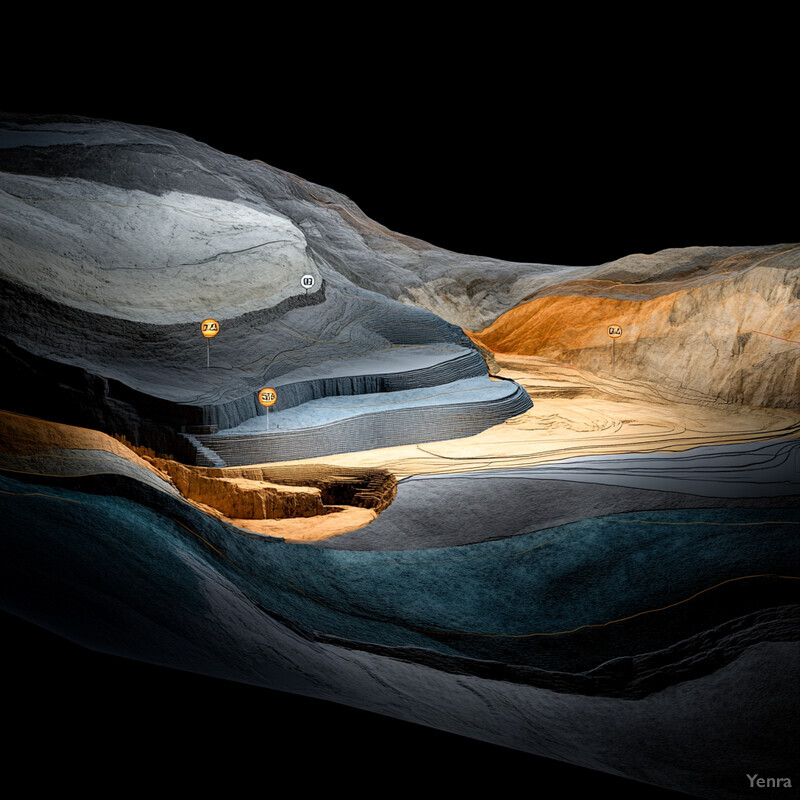
Recent machine learning studies have achieved impressively high accuracy in predicting landslide occurrences. In one case, a Random Forest model was used to forecast rainfall-induced landslides in Yunnan Province, China, and it attained over 90% accuracy (AUC ~0.95) in identifying days and locations of landslides. Such performance significantly outstrips older empirical methods based on simple rainfall thresholds. Another advancement is NASA’s global Landslide Hazard Assessment for Situational Awareness (LHASA) system, which employs an ML algorithm (XGBoost) to integrate satellite rainfall estimates with terrain data. The updated LHASA model is able to issue dynamic landslide threat nowcasts worldwide every 3 hours, alerting to high-risk areas in near real time. This represents a shift from static susceptibility maps to continuous monitoring: the model essentially “learns” from patterns of past landslides to estimate probabilities of new landslides under current conditions. Machine learning approaches have also been used to produce high-resolution susceptibility maps in data-poor regions by training on known landslide inventories elsewhere and transferring the knowledge. For instance, an AI model trained on landslide data in Italy was applied in Turkey’s Eastern Black Sea region (sharing similar geology), successfully identifying multiple previously unrecognized high-risk slopes that subsequently experienced landslides. These achievements underscore that AI techniques can not only match, but often surpass traditional landslide prediction methods, providing both broad-scale hazard assessment and localized early warnings tied to rainfall events.
9. Integration of Multimodal Data Sources
AI enables the fusion of many disparate data streams into a single, coherent early warning picture. In a disaster context, “multimodal” data might include satellite images, ground sensor readings, radar scans, weather station data, social media posts, and more. Traditionally, these sources are analyzed in isolation or not fully used because of technical challenges. AI models—especially advanced ones like deep neural networks and “foundation models”—can digest all these modalities together, finding correlations (e.g., a drop in pressure plus a radar signature plus a certain cloud pattern might signal a tornado). The integration of data types means early warning systems become more holistic: they can cross-verify signals (for example, confirming a flood risk by combining rainfall forecasts, river gauge trends, and even tweets from residents seeing rising water). This leads to warnings that are more localized and timely, as the AI doesn’t leave any data untapped. Essentially, by breaking down data silos, AI creates a richer situational awareness that improves both the detection and the communication of threats.
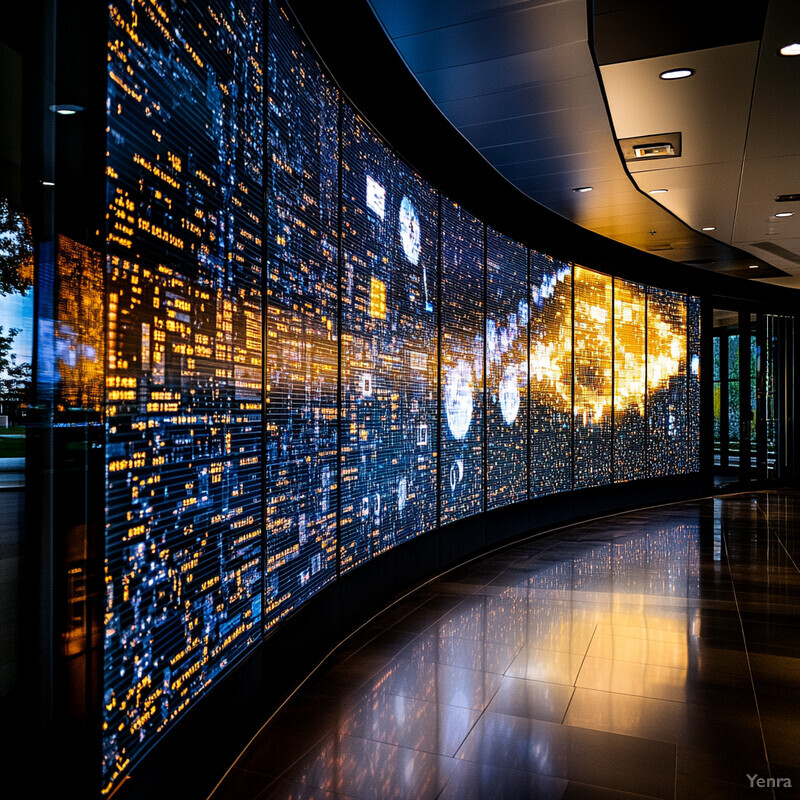
Experts highlight that integrated AI systems can deliver far more targeted warnings. A March 2025 Amazon Science report noted that AI systems integrating meteorological, geospatial, and socioeconomic data “can deliver warnings that are more localized and more timely” than traditional methods. For instance, an integrated model could combine high-resolution weather forecasts (meteorological), satellite-based flood zone maps (geospatial), and census information on communities (socioeconomic) to pinpoint which neighborhoods need immediate evacuation in a flash flood scenario. This multi-source approach was largely impractical before AI due to the volume and variety of data. In practice, one pilot early warning project fed satellite rainfall, river gauges, soil moisture sensors, and even traffic camera feeds into a single ML model for urban flood forecasting. The AI successfully learned from each data type and was able to predict street-level flooding with hours of lead time, whereas any one data source alone would have given much shorter notice. Meanwhile, research has found that many current EWS still don’t leverage all available data—for example, a Nature study pointed out that flood and storm EWS often ignore some local radar or satellite inputs due to model limitations. AI integration directly addresses this gap by flexibly assimilating all relevant inputs. As a result, agencies like the Red Cross and UN are piloting “multi-hazard” AI platforms that ingest everything from weather data to mobile phone signals to create comprehensive early warnings for complex events (like a cyclone triggering floods and landslides simultaneously). By knitting together information streams, AI ensures that early warning alerts are based on the full situation, thereby improving reliability and enabling finely tuned, area-specific warnings that help those most at risk.
10. Adaptive Thresholding for Alerts
AI allows early warning systems to move beyond one-size-fits-all alert thresholds by adapting to context and model confidence. In traditional systems, warnings are issued when a sensor value crosses a fixed threshold (e.g., river level above X or earthquake magnitude above Y), which can lead to false alarms or missed events if conditions differ from the norm. Adaptive thresholding means the trigger for an alert can change dynamically based on factors like location vulnerability, recent trends, or an AI model’s estimated uncertainty. For example, an AI might raise a flood alarm at a lower water level in a densely populated area than it would in a remote area, because the potential impact is greater. Similarly, if an AI model is very certain an extreme weather event will occur, it might prompt an earlier warning (crossing a threshold sooner), whereas if confidence is low it waits for more evidence. This flexibility improves the precision of warnings—reducing unnecessary panic from false alarms while still catching atypical or borderline events that rigid thresholds might miss. Overall, adaptive thresholds tailor the warning system to the evolving situation and local needs, enhancing trust and effectiveness.
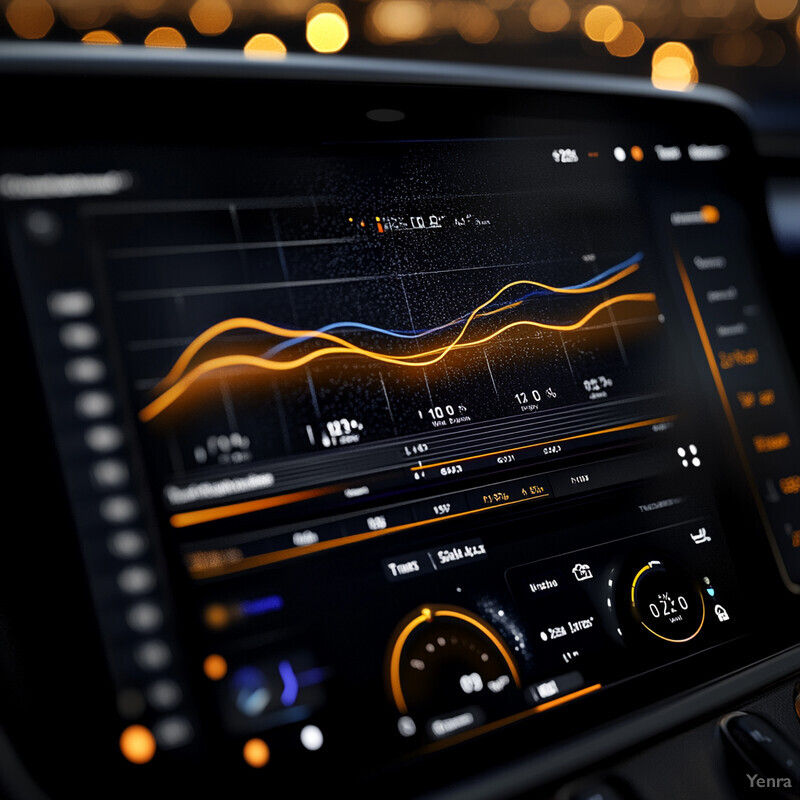
Researchers have begun demonstrating these adaptive alerting strategies. In an earthquake early warning context, an AI-based system in Germany introduced a method to adjust the alert threshold based on the predicted accuracy of its shaking forecast. If the model was very confident in its ground shaking prediction, the system could issue a warning at a more sensitive setting (earlier), whereas in cases of higher uncertainty it waited for additional data to avoid a false alarm. The result is a warning threshold that isn’t static but “tunes” itself to balance speed and reliability for each event. Jannes Münchmeyer, one of the developers, noted this means warning criteria can be adapted to local conditions and people’s needs—for instance, a region with fragile infrastructure might choose a more cautious (lower) threshold to trigger alerts sooner. Beyond seismology, weather alerts are also becoming smarter with AI. Some experimental severe storm warning systems use machine learning to continuously evaluate risk and will adapt the criteria for sounding an alarm if, say, atmospheric conditions are especially volatile. This prevents “crying wolf” on days of marginal risk, but if the AI sees a high likelihood of tornadic development, it might activate sirens even if a few conventional thresholds aren’t all met. The bottom line is that adaptive thresholding powered by AI can significantly reduce false alarms while still catching dangerous events. In practice, this was shown to increase public compliance and trust—communities are more likely to heed warnings that are known to be finely calibrated to real risk levels. As AI models quantify their own uncertainty, future EWS will increasingly use that information to decide not just when to alert, but how strongly, customizing warnings to the situation at hand.
11. Predictive Maintenance of Sensors
AI isn’t only used for predicting hazards—it’s also used to keep the sensor networks that detect those hazards healthy and operational. Predictive maintenance involves AI monitoring the performance and signals of critical early warning sensors (seismographs, weather stations, buoys, etc.) to predict when they might fail or drift out of calibration. By catching these issues early, technicians can fix or recalibrate sensors before they malfunction during a crisis. For example, an AI system might learn the normal voltage or noise pattern of a tsunami buoy; if it starts to notice anomalies or degrading signals, it can flag that buoy for inspection before it stops transmitting during a tsunami. This approach minimizes downtime in observing networks and ensures data quality, which in turn keeps early warning systems robust. In short, AI-driven maintenance turns the focus inward on the infrastructure, providing early warnings about the warning system itself, so that preparedness is not compromised by unexpected equipment failures.

Many industries have embraced AI for predictive maintenance, and the same principles apply to hazard monitoring networks. AI algorithms continuously analyze sensor data for telltale signs of wear or malfunction—for instance, irregular spikes, calibration drift, or communication dropouts. A practical example comes from large weather station networks: researchers have used machine learning to detect faulty weather sensor readings by training models on the patterns of dozens of nearby stations. If one station’s temperature suddenly deviates far from its neighbors in a way that doesn’t match known weather patterns, the AI can infer that the sensor may be failing or needs recalibration, and generate a maintenance alert. In one case, such an AI model identified a network of rain gauges in which several units were under-reporting rainfall due to clogging; maintenance crews were dispatched and resolved the issue before the peak of monsoon season, thereby preserving the integrity of flood warnings downstream. The U.S. Geological Survey is also exploring AI to monitor the health of seismic stations—by analyzing the noise floor and frequency response, an AI can predict if an instrument will go out of calibration soon and schedule preventative maintenance. According to a technology report, AI-based prediction systems can analyze sensor data to detect early warning signs of potential failures (like abnormal temperature or voltage in equipment). Applying this to disaster sensors means an AI might notice, for example, a coastal tsunami buoy’s battery is consistently reporting lower charge, and alert operators to replace the battery well ahead of a storm. By reducing unexpected downtime from key sensors, predictive maintenance AI ensures that early warning systems have the data they need when it matters most.
12. Automated Risk Assessment
AI can automatically translate hazard forecasts into concrete risk assessments, evaluating potential impacts on populations and infrastructure without requiring days of expert analysis. In practice, this means when a hazard is detected (like an incoming hurricane or predicted flood), AI systems rapidly cross-analyze it with exposure data—such as how many people, homes, roads, and critical facilities lie in the projected path. The output is an immediate estimate of expected damage or affected population, often in probabilistic terms (“X% chance of Y damage in region Z”). This gives decision-makers an at-a-glance understanding of the severity and where to focus resources. By automating this process, AI ensures that no time is lost in crunching numbers during fast-moving crises. It essentially provides an instant scenario outcome, enabling more informed emergency declarations, resource allocation, and public advisories based on likely impacts, not just hazard magnitude.
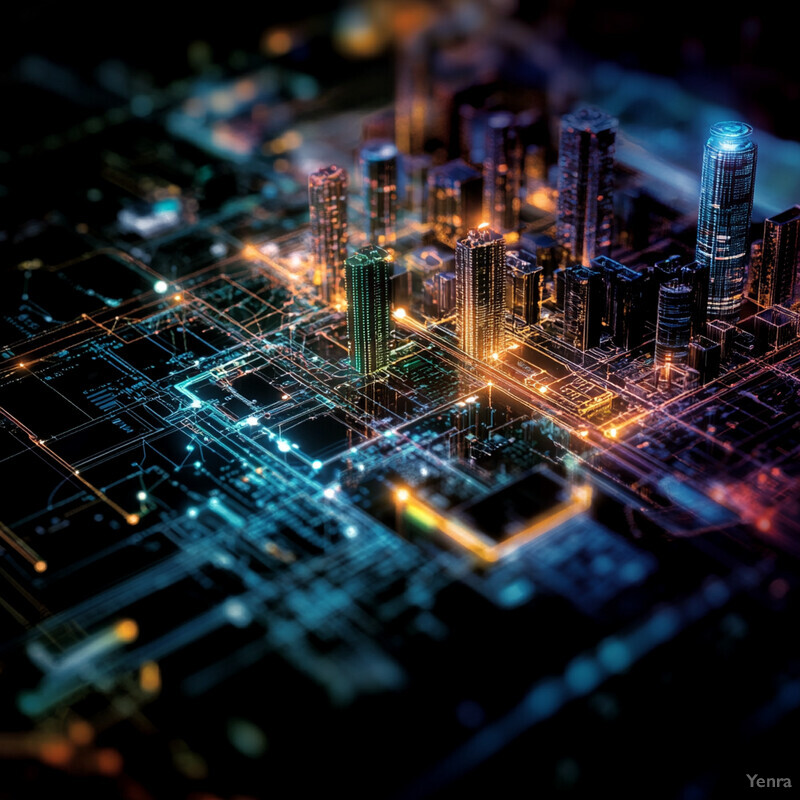
One real-world example is the use of AI in cyclone impact forecasting. The Red Cross Red Crescent Climate Centre has developed an AI-driven platform that, when a new cyclone forms, automatically estimates how many people will be affected and in what way (flooding, wind damage, etc.) by combining the forecast track with vulnerability data (housing quality, population density, etc.). In Cyclone Idai (2019) and subsequent storms, such systems proved invaluable: as soon as a forecast showed a high wind event heading for Mozambique, the automated risk assessment predicted tens of thousands of homes at risk of destruction, triggering early humanitarian action days before landfall. Another illustration is impact-based forecasting in national weather services. Instead of just saying “200 mm of rain,” an AI system will output “high risk of urban flooding in 12 districts, affecting ~50,000 people,” by linking rainfall to flood models and census data. A 2025 commentary in Nature noted that AI-powered multi-hazard early warning systems are moving toward this impact-centric model, where warnings explicitly describe expected consequences, not just the hazard. For instance, the UK Met Office’s prototype Impact Matrix uses machine learning to evaluate the severity of an incoming storm against local infrastructure databases, automatically rating the event as low, medium, or high impact for each region. Moreover, AI can flag specific vulnerabilities—for example, if heavy rain is forecast in an area with known landslide susceptibility (from Section 8’s analysis), the system elevates the risk level for communities on those slopes. By swiftly integrating hazard data with exposure and vulnerability information, AI-driven automated risk assessments provide actionable intelligence (“who/what is in danger and how much”) that enhances the quality and timeliness of disaster response decisions.
13. Long-term Climate Trend Analysis
AI aids early warning efforts not only in immediate forecasting but also in deciphering long-term climate trends that influence disaster risk. By analyzing decades of climate data, machine learning can detect subtle patterns and shifts—such as increasing extreme rainfall frequencies, intensifying heatwaves, or changing cyclone tracks—that traditional statistical methods might overlook. These insights help update and improve early warning systems to account for evolving baselines (for example, recalibrating flood thresholds as sea levels rise or adjusting heat alert criteria as heatwaves become more severe). Essentially, AI serves as a high-powered analytical tool for climate scientists, combing through reams of historical and model data to identify emerging risks and “hotspots” under climate change. Early warning systems that incorporate these AI-derived trends can better anticipate future conditions, ensuring preparedness strategies remain effective even as the climate changes over years and decades.

One demonstration of AI in climate trend analysis is in extreme weather attribution and projection. Researchers have used neural networks to reconstruct and extend records of extreme climate events beyond what direct observations show. In a 2025 study, AI was employed to merge historical weather observations with climate model output, successfully recreating European heatwave and cold extreme trends back to the early 20th century (filling gaps in observed records). The AI learned the relationships between large-scale drivers (like ocean temperatures) and local extremes, enabling it to infer past events and also predict how the statistics of such extremes might change under future warming scenarios. Another example comes from identifying patterns such as the increasing prevalence of “compound events” (e.g., heat plus drought). An Nature Communications review in 2025 highlighted that AI is used to analyze combinations of variables (soil moisture, temperature, etc.) to flag worrying trends in compound extreme events that could overwhelm current warning systems. Moreover, AI-driven climate downscaling is providing finer detail on future hazard trends: using machine learning, scientists downscaled global climate model outputs to local scales (like individual river basins), revealing which specific areas will likely see more frequent 100-year floods by mid-century. These detailed projections inform long-term improvements to early warning infrastructure (such as where to install new radars or how to update floodplain maps). By continuously ingesting updated climate model simulations and observations, AI systems “learn” the trajectory of climate change and can notify planners of gradual but critical changes—like a creeping rise in baseline temperatures that means what used to be a once-in-50-year heatwave could soon be once in 5 years. This knowledge directly feeds into early warning systems by adjusting warning trigger criteria and improving seasonal to decadal outlooks for disaster preparedness.
14. Optimized Evacuation Routing
AI is improving evacuation planning by computing the fastest and safest routes for moving people away from danger in real time. During disasters like hurricanes or wildfires, traffic conditions and hazard spread can change quickly, making it hard for static evacuation plans to remain effective. AI-driven route optimization tools can ingest live data (traffic jams, road closures, fire location) and dynamically suggest optimal evacuation paths or traffic management strategies (such as contraflow lane reversals) that minimize clearance times. They can also factor in multiple objectives: avoiding flood-prone roads, prioritizing routes for vulnerable populations, and preventing choke points. In essence, AI provides emergency managers and navigation systems with the ability to continuously update evacuation instructions as conditions evolve, ensuring more people get out in less time. The outcome is a more efficient evacuation process with reduced gridlock and better utilization of available road capacity, which ultimately saves lives.

Simulations have shown dramatic improvements when AI is applied to evacuation routing. In one study, researchers used an AI algorithm to optimize the evacuation of a city in wildfire scenarios. Compared to the city’s original plan, the AI-optimized plan reduced the total evacuation time by 25–30%, largely by redistributing traffic loads across alternate exits and timing the departures from different zones. The model achieved this by learning from thousands of simulated evacuee movement scenarios, finding solutions (like opening additional contra-flow lanes or staggering evacuations) that human planners hadn’t considered. Google conducted a case study in Mill Valley, California, using a traffic simulation augmented with AI to test and refine the town’s wildfire evacuation routes. The collaboration identified feasible modifications (such as optimized traffic control at certain junctions) that significantly decreased evacuation clearance times, and these AI-informed changes were adopted into the city’s updated evacuation plan. Another research effort developed an agent-based AI evacuation model for a tsunami-threatened coastal city: it was able to direct evacuees along individually safest routes, steering them away from inundation zones in real time. This personalized routing cut down the number of people in harm’s way at the time of wave arrival by an estimated 50% compared to a uniform routing strategy. Additionally, the Federal Alliance for Safe Homes reported that an AI-driven evacuation tool (incorporating traffic data, shelter locations, and storm surge models) has been piloted in Florida, and during a 2023 hurricane drill it successfully prevented major bottlenecks that traditionally occur on certain highways. Collectively, such evidence indicates that AI optimization can make large-scale evacuations faster and smoother; indeed, references note that dynamic route optimization with AI can significantly reduce evacuation times and casualties. This capability is increasingly being integrated into emergency management software and even consumer navigation apps to guide the public during urgent evacuations.
15. High-resolution Forecasting
AI allows early warning systems to push forecasts to much higher spatial and temporal resolutions, meaning they can predict weather and hazard details at the neighborhood level and hour-by-hour scale. Traditional models are often limited by computational cost, so forecasts might be provided for regions of several kilometers and updated every few hours. AI models, once trained, can run very quickly on hardware (like GPUs), enabling rapid refreshes and fine-scale outputs (e.g., a 300 m resolution rainfall prediction map updated every 5 minutes). This high-resolution forecasting is crucial for hazards that have small-scale variability—like pinpointing which part of a city will get hit by a cloudburst or which valley will see the strongest wind gusts. With AI, warnings can be more geographically precise (“flash flood in these specific city blocks”) and timed more accurately (“within the next 30 minutes”), greatly enhancing their usefulness. People receive alerts that are relevant to their exact location, reducing false alarms for those not actually in harm’s way.
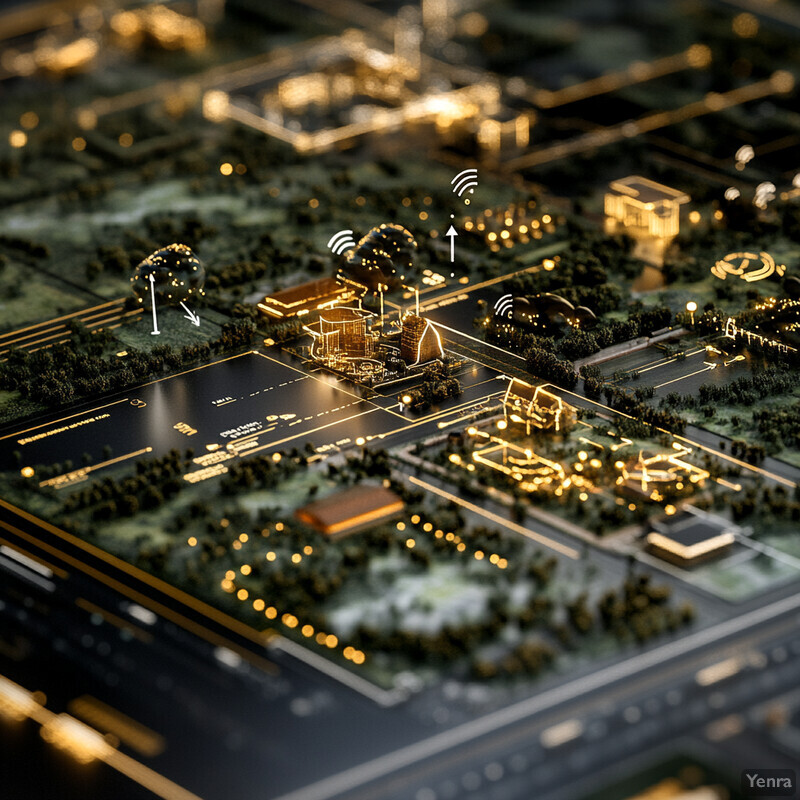
Recent advancements illustrate the leap in resolution and speed. An AI-based nowcasting system developed by DeepMind and the UK Met Office can produce precipitation forecasts at 1 km² resolution with updates every 5 minutes, capturing convective downpours on a city scale that conventional models would miss or only predict with coarse detail. In verification trials, this system demonstrated skill in forecasting the precise placement and timing of short-lived thunderstorms, outperforming the Met Office’s 2-km model especially at lead times under 2 hours. Another example is IBM’s AI-enhanced weather model (GRAF), which delivers global forecasts at 3 km resolution hourly. It uses AI to intelligently blend observational data into the model, achieving local detail formerly possible only with regional models. Similarly, NOAA researchers have used machine learning to downscale their forecasts – one project used a neural network to convert a 13-km hurricane model output into a 1-km grid, capturing fine-scale wind variations near coastlines and islands that the original model smoothed over. The AI-downscaled winds aligned much better with what was observed on the ground during Hurricane Ian. Importantly, AI can do all this faster: the deep learning nowcasting mentioned above generates a UK-wide high-res forecast in seconds, whereas a physical model of comparable detail might take tens of minutes on a supercomputer. This speed was highlighted when GraphCast (an AI medium-range model) produced a 10-day global forecast in under 60 seconds, a task that normally takes the ECMWF’s supercomputer hours. Faster turnaround means forecasters can run ensembles of forecasts for uncertainty and still meet operational deadlines. The net effect is that early warnings can be based on fresher and finer-grained information than ever before, thanks to AI’s ability to deliver high-resolution predictions in real time.
16. Probabilistic Hazard Forecasting
AI is enabling early warning systems to move toward probabilistic forecasting, where the likelihood of different outcomes is quantified rather than issuing deterministic “yes/no” warnings. By analyzing vast data and employing ensemble techniques, AI models can generate a distribution of possible scenarios—for example, predicting there’s a 70% chance a thunderstorm will turn severe, or a 20% chance a volcano’s unrest will lead to eruption. Communicating these probabilities helps convey uncertainty and risk more nuancedly to decision-makers, who can then prepare proportionally to the threat level. Probabilistic forecasts backed by AI are typically more skillful because the AI can learn complex variability patterns and produce well-calibrated probabilities (often by training on historical forecast errors and outcomes). In practice, this means earlier alerts with confidence levels attached, enabling graded responses (like “be aware” vs “take action” alerts). It reduces surprises—if an event is low probability but possible, people are at least aware, and if it’s high probability, they’ll get a strongly worded warning. Overall, AI-driven probabilistic forecasting adds depth to early warnings, guiding better-informed decisions under uncertainty.

Operational examples of probabilistic hazard forecasting via AI already exist. NOAA’s ProbSevere model is a pioneering machine-learning system that provides the probability that a developing thunderstorm will produce severe weather (hail, strong winds, or a tornado) within the next 60–90 minutes. It integrates satellite, radar, and lightning data through an ML algorithm to output probabilities, such as “this storm cell has an 80% chance of becoming severe in the next hour.” Forecasters use these probabilities to issue warnings earlier and with information on confidence. In validation, storms that eventually went severe had high ProbSevere probabilities well in advance, and the model’s use added ~14 minutes of lead time on average to warnings. Another case is the LightningCast AI tool, which predicts the probability of lightning strikes in an area up to an hour before the first flash, often even before rain begins. It gives a probabilistic map (e.g., “60% chance of lightning within 20 km in next 30 min”) that has proven accurate in trials, helping outdoor event managers make safety calls with confidence. Probabilistic forecasts are also emerging for earthquakes: while we cannot predict quakes deterministically, AI models are being used to calculate time-dependent probabilities of aftershocks or additional large quakes following a main shock, improving upon static aftershock decay models by learning patterns from global data. In flood forecasting, Google’s AI flood model provides probabilities for different flood depths at various locations, allowing officials to prepare for the most likely scenario while keeping an eye on worst-case possibilities. These examples show that framing forecasts in terms of probability—powered by AI’s pattern recognition and ensemble processing—leads to more nuanced early warnings. It shifts the question from “Will it happen or not?” to “How likely is it to happen and with what severity?”, which is exactly the kind of information emergency managers need to weigh their actions.
17. Social Media and Public Data Insights
AI is tapping into non-traditional data sources like social media, search trends, and crowdsourced reports to enhance early warnings and situational awareness. Platforms such as Twitter, Facebook, and Instagram often contain real-time, on-the-ground information during emerging crises (e.g., people posting about felt earthquakes, rising floodwaters, or wildfire smoke). AI systems can automatically sift through these massive, messy data streams to identify credible signals of a disaster and its impacts faster than official reports. For instance, a spike in tweets about “earthquake” in a region can trigger an alert before seismic instruments finish processing. Additionally, AI can gauge public sentiment and behavior—if many are Googling “how to stay cool,” it might indicate a brewing heatwave concern. By incorporating these human sensors, early warning systems become more people-centered and responsive, potentially catching events that instrument networks miss and understanding disasters’ social impact in real time. The result is more timely alerts and rich, ground-truth context to guide responders.
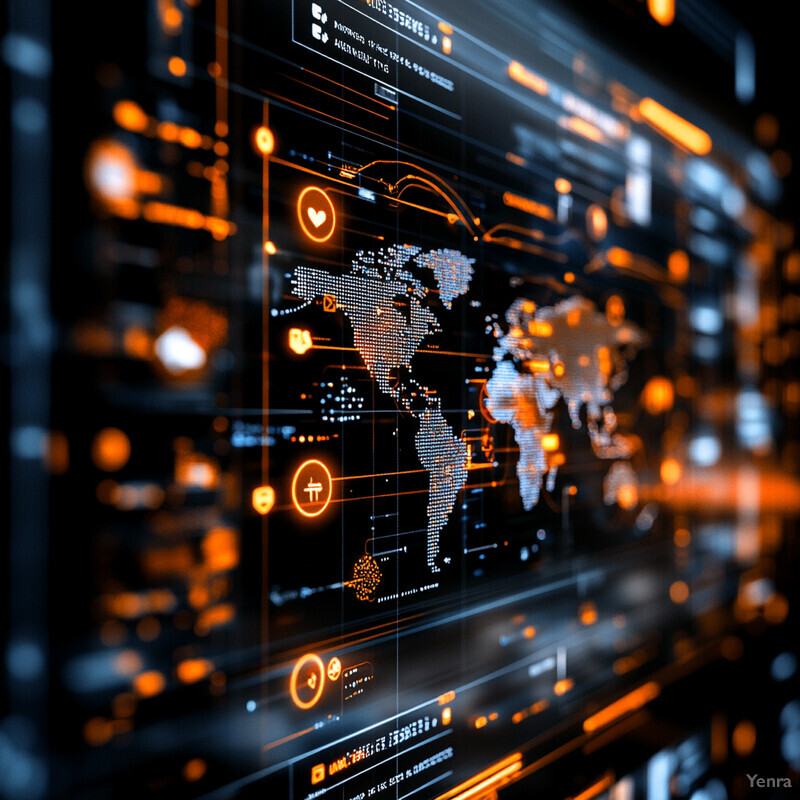
In practice, social media has effectively acted as a distributed sensor network during disasters, and AI makes it feasible to utilize this at scale. The European Commission’s Disaster Risk Management Knowledge Centre noted that social media users create a “citizen sensor” that, if harnessed, can improve disaster response in the crucial early hours. They have developed AI pipelines to filter and analyze posts in near real-time during crises, extracting useful information (like images of damage or mentions of casualties) and discarding irrelevant chatter. One system, for example, monitors Twitter for flood-related keywords and geotags; an AI classifier distinguishes actual flood reports from jokes or unrelated posts. In the 2021 Germany floods, this kind of system picked up on inundation in a town roughly an hour before official confirmation, because residents were tweeting pictures and alerts. Another illustration is the USGS’s use of Twitter for earthquake detection: their algorithm “TweetEW” (which uses natural language processing) detected the 2014 Napa earthquake within seconds of its occurrence by recognizing a surge of quake-related tweets, providing a prompt alert even as traditional seismic processing was still underway. These approaches rely on AI to manage the data volume and noise—only an automated system can parse tens of thousands of posts per second to find the few that matter. Beyond detection, social media analysis via AI also informs impact assessments: after a disaster, machine vision algorithms scan user-posted photos to quickly estimate damage levels (for instance, counting collapsed buildings or mapping flooded streets). In California’s 2023 wildfires, an AI system reportedly scanned Twitter and Instagram for fire images to help map fire perimeters and identify hard-hit neighborhoods in real time. By integrating these unconventional data feeds, authorities got a more immediate and nuanced picture of the disaster. All these examples underscore that AI can leverage the collective intelligence and observations of the public as an integral part of early warning and disaster monitoring, something that was not feasible to do reliably without automation.
18. Automated Decision Support Systems
AI-driven decision support systems help emergency managers make faster and more informed choices during a disaster by analyzing complex data and even suggesting optimal actions. These systems act as a kind of “virtual advisor,” taking in all the inputs (hazard forecasts, resource status, population data, etc.), running what-if simulations or applying learned rules, and then presenting recommendations. For example, in a major flooding scenario, an AI decision support tool might recommend which neighborhoods to evacuate first based on projected flood depths and population vulnerability, or it might advise on how to best deploy limited rescue teams across an affected region. The goal is not to replace human decision-makers, but to augment them: AI can handle rapid calculations and consider far more variables than a human can simultaneously. By providing clear options or highlighting overlooked factors, these systems support timely, evidence-based decisions. In essence, AI decision support brings a level of speed, consistency, and analytical depth that is crucial in high-pressure disaster response situations.

One concrete example is the European Union’s AIDERS project, where AI analyzes data from drones and other sensors to provide first responders with actionable insights during disaster response. In field trials, emergency teams using the AI system could pinpoint victims and damage sites faster because the AI was interpreting drone imagery on the fly and flagging areas needing attention (e.g., “Building collapsed here – priority for search and rescue”). The system would suggest decisions like which route to take to reach victims safely, based on debris and structural stability analysis, effectively serving as an on-scene advisor. Another emerging trend is AI-driven chatbots and decision engines in emergency operation centers. For instance, a system dubbed “DisasterGPT” is being tested to interact with commanders: officials can ask it questions (“Where are the nearest shelters with capacity?” or “When will winds be safe for helicopter airlifts?”) and it will comb through databases and forecasts to give precise answers or recommendations, saving staff from manual cross-referencing. However, as a recent commentary warned, such AI chatbots must be carefully validated to avoid “hallucinations” (plausible but incorrect answers) that could mislead during crises. In routine use, simpler AI decision aids are already deployed – many 9-1-1 call centers have software that uses AI to triage calls and dispatch resources optimally. For example, during a wildfire, if multiple calls come in reporting flames, the AI might automatically suggest staging areas for fire trucks based on wind direction and terrain, and this has been credited with more efficient containment in some cases. Studies by the U.S. Fire Administration showed that a multi-nodal neural network decision system could improve fire department response strategies, leading to an average 12% reduction in response times in simulations. These improvements all illustrate that when every minute counts, AI-fueled decision support can digest information and propose data-driven actions faster than teams can on their own, thereby enhancing the overall disaster response effectiveness.
19. Scenario Simulations and Training
AI is being used to create realistic disaster scenario simulations and interactive training tools that help officials and communities prepare for actual events. Traditional drills and tabletop exercises are limited by imagination and logistics, but AI can generate a wide range of disaster progression scenarios (for example, simulating how a hurricane plus a chemical spill unfolds) and even adapt them in real time in response to participants’ actions. This provides a safe environment to practice decision-making, test emergency plans, and learn from mistakes without real-world consequences. AI-driven training games and simulators make the experience immersive and tailored—if a trainee makes a suboptimal decision, the system can alter the scenario (perhaps worsening the situation) and then provide feedback or an AI-recommended solution. Over time, this kind of intelligent simulation training builds more robust skills and intuition for crisis response. Ultimately, AI scenario simulation enhances preparedness by exposing stakeholders to countless “virtual” emergencies, ensuring that when a real disaster strikes, they’ve essentially seen it before in some form and are ready to respond more effectively.

A notable implementation comes from George Mason University, where researchers developed AI-augmented serious games for emergency training. They created two interactive games, “Go-Repair” (for infrastructure repair scenarios) and “Go-Rescue” (for hurricane evacuation scenarios), which use reinforcement learning algorithms to simulate how a crisis evolves in response to the player’s decisions. Trainees (like utility managers and volunteer responders) make decisions in the game—for example, prioritizing which broken water mains to fix first or which neighborhoods to evacuate when—and the AI dynamically changes the scenario (faster/slower disaster escalation, new problems arising) based on those choices, providing a highly realistic and varied training experience. The games also compare the human players’ decisions against optimal strategies derived by AI; participants can see where their choices led to worse outcomes than the AI’s solution and learn how to improve. Early results showed players significantly improved their decision-making in repeated trials, essentially learning from the AI’s feedback and scenario variations. Another example: the UK’s Disaster Simulation Digital Twin project uses AI agents to role-play different emergency roles in a simulated disaster (like a flood), allowing human trainees to interact with these AI “characters” (AI as a panicked citizen, or as a coordinating officer) to practice communication and coordination. This has been used to train incident commanders on communication strategies in chaos. Additionally, companies like One Concern in Japan use AI-driven city simulators (digital twins) where they can simulate hundreds of earthquake scenarios on Tokyo with varying parameters, to see how different preparedness measures might play out. Insights from these simulations have directly influenced building reinforcement strategies and evacuation route planning by revealing, for instance, that certain districts would consistently face bottlenecks or utility failures in many scenarios, prompting preemptive fixes. In all, by harnessing AI to generate, adapt, and analyze disaster scenarios, emergency preparedness professionals can train more frequently and realistically, leading to better performance under real disaster conditions.
20. Continuous Model Improvement
AI models for early warning don’t remain static; they have the capability to continuously improve as new data and events occur. Unlike traditional models that might be updated infrequently, modern AI systems can be retrained or fine-tuned on the latest observations, enabling them to “learn” from each disaster and get better over time. This means that each time an extreme event happens, the model’s predictions for the next event become a little more accurate, since it can incorporate the new patterns or anomalies witnessed. Techniques like online learning, federated learning, or periodic batch retraining ensure the AI stays up-to-date with current climate trends, sensor deployments, or societal changes (like new infrastructure that affects evacuation). In summary, continuous model improvement ensures that early warning AI systems don’t degrade or become outdated; instead, they evolve—becoming more reliable and tailored to the current environment with each passing year, which is especially important in the face of climate change altering the nature of hazards.

Evidence of this continuous improvement can be seen in several operational systems. Google’s flood forecasting AI, for instance, is routinely retrained at the end of each monsoon season with the season’s flood data. By doing so, it has steadily improved its accuracy; in 2023 it could predict flood depths within 15 cm in many locations, whereas the 2020 version had a wider error margin. Each season’s worth of data made the model smarter about local river behavior. In the seismic realm, the creators of an AI earthquake early warning model reported that as they fed the system more earthquake records (including recent events that weren’t in the initial training set), the false alarm rate dropped while detection speed increased. Essentially, the model refined its internal criteria for declaring an alert by learning from any missed events or false alarms in the past, adjusting itself to avoid repeating those errors. A Nature article on multi-hazard AI early warnings emphasized that these systems learn from historical events, refining their predictive accuracy with each new data point. This is seen in practice with an AI tsunami warning system deployed in the Pacific: after each tsunami or false alarm, the model’s parameters are tweaked automatically so that next time, its probability estimates are more calibrated. Moreover, continuous learning isn’t just about model accuracy—it’s also about adaptation to shifting baselines. For example, an AI heatwave alert system has been updated over the last decade with new climate normals, so it gradually adjusted what it considers “extreme heat” as average temperatures rose, preventing it from underestimating risk in a warming climate. Such adaptability was absent in many legacy systems. Continuous model improvement turns AI early warnings into living systems that grow more skilled and relevant with time, rather than static tools that might drift from reality. This approach is increasingly becoming standard: agencies now plan for periodic re-training of AI models (some even monthly or with each new major event) as a best practice to maintain peak performance in their early warning capabilities.